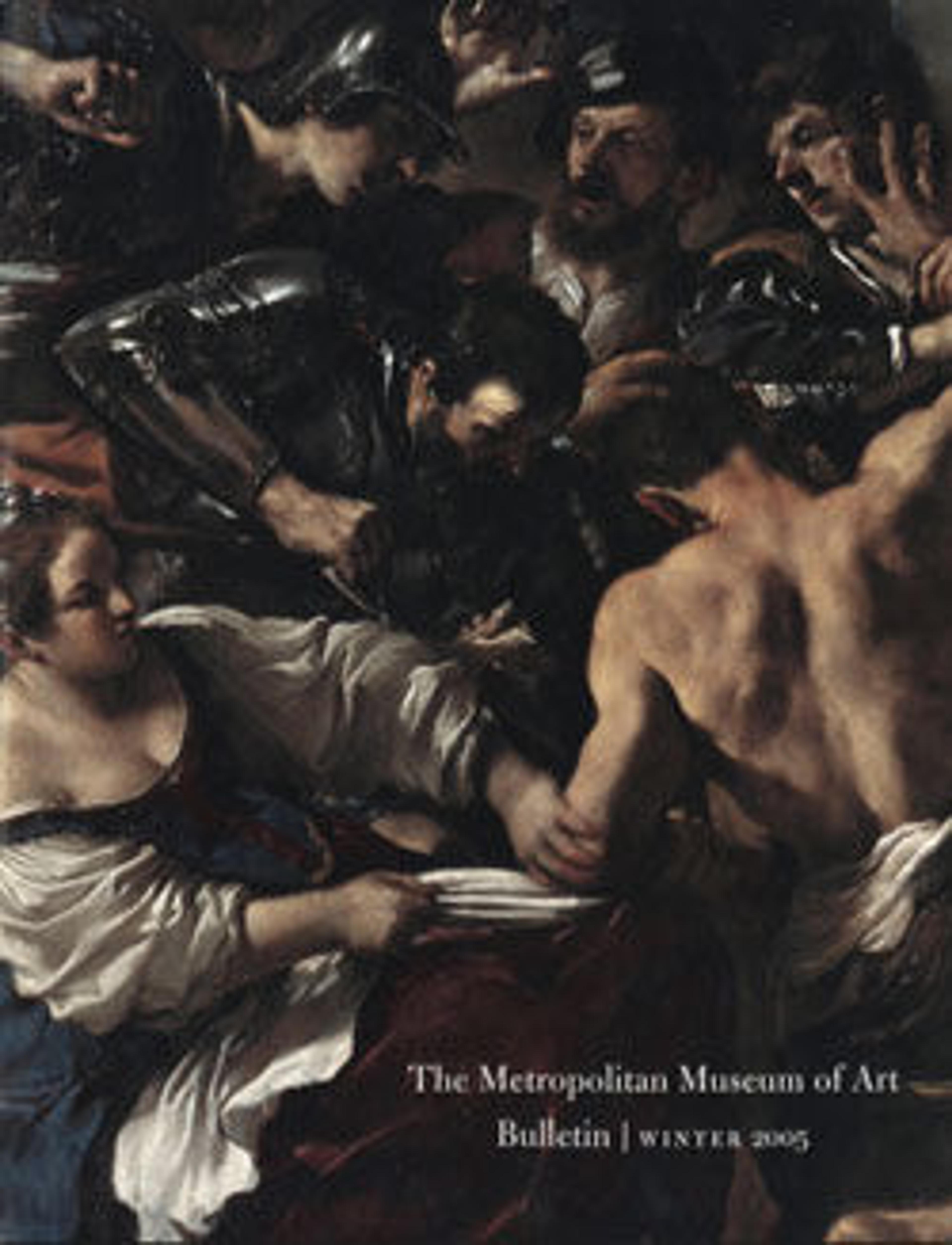Figure and Drapery studies (recto); Three Studies of a Male Torso for the "Coronation of Marcantonio Pasqualini'" (verso)
In this sheet of studies of a male torso Sacchi worked out the pose of the god Apollo for his painting Marcantonio Pasqualini Crowned by Apollo (on view in the Museum's European Paintings galleries). A masterpiece of Italian Baroque art, the painting is
a portrait of a celebrated singer at the papal court as well as an allegory of music. The figure of Apollo is loosely based on the famous Apollo Belvedere, an exceedingly influential ancient Roman sculpture in the Vatican collections. Here, Sacchi shows him holding a lyre (an ancient stringed instrument sacred to Apollo) in his left hand and a wreath with which he prepares to crown the triumphant singer in his upraised right hand. Both details of Apollo's pose were retained in the final painting.
a portrait of a celebrated singer at the papal court as well as an allegory of music. The figure of Apollo is loosely based on the famous Apollo Belvedere, an exceedingly influential ancient Roman sculpture in the Vatican collections. Here, Sacchi shows him holding a lyre (an ancient stringed instrument sacred to Apollo) in his left hand and a wreath with which he prepares to crown the triumphant singer in his upraised right hand. Both details of Apollo's pose were retained in the final painting.
Artwork Details
- Title: Figure and Drapery studies (recto); Three Studies of a Male Torso for the "Coronation of Marcantonio Pasqualini'" (verso)
- Artist: Andrea Sacchi (Italian, Rome (?) ca. 1599–1661 Rome)
- Date: 1641
- Medium: Red and white chalk (recto); red chalk (verso)
- Dimensions: Sheet: 10 7/8 x 15 11/16 in. (27.7 x 39.8 cm)
- Classification: Drawings
- Credit Line: Purchase, Guy Wildenstein Gift, 2003
- Object Number: 2003.109
- Curatorial Department: Drawings and Prints
More Artwork
Research Resources
The Met provides unparalleled resources for research and welcomes an international community of students and scholars. The Met's Open Access API is where creators and researchers can connect to the The Met collection. Open Access data and public domain images are available for unrestricted commercial and noncommercial use without permission or fee.
To request images under copyright and other restrictions, please use this Image Request form.
Feedback
We continue to research and examine historical and cultural context for objects in The Met collection. If you have comments or questions about this object record, please complete and submit this form. The Museum looks forward to receiving your comments.
